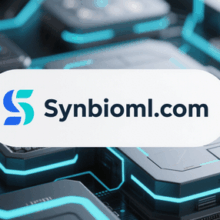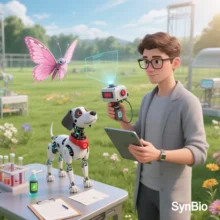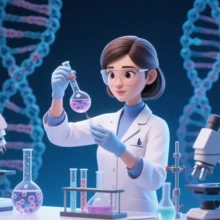
Applications and Innovations of Biosensors in Drug Screening
Biosensors have revolutionized drug screening with their high sensitivity, real-time monitoring, and target-specific recognition. Below, we categorize key examples by technological principles and application scenarios, highlighting breakthroughs from 2020–2025.
I. Fluorescent Biosensors
- iDrugSnFRs (Intensity-based Drug-Sensing Fluorescent Reporters):
Developed by Caltech, these sensors monitor real-time drug-target interactions via reversible fluorescence signals, enabling subcellular pharmacokinetic studies.- Applications:
- Screen CNS drugs (e.g., alkaloids) by tracking drug distribution across organelles and cytoplasm.
- Detect weak-base drugs (<500 Da) in high-throughput screens (44–84 compounds tested per run).
- CY5-ConA Complex:
Concanavalin A (ConA) conjugated with CY5 dye visualizes drug-glycoprotein interactions.- Applications:
- Screen glycosylation-targeting drugs (e.g., tumor surface receptors) to assess binding affinity.
- FRET-based sensors track drug-induced glycoprotein conformational changes.
II. Electrochemical Biosensors
- DNA Interaction Sensors:
Detect anticancer drug activity via guanine oxidation current changes caused by drug-dsDNA binding.- Applications:
- Evaluate cisplatin-DNA crosslinking for anticancer efficacy and toxicity.
- Study dose effects of methotrexate on DNA replication interference.
- Enzyme Inhibition Sensors:
Immobilized enzymes (e.g., tyrosinase, acetylcholinesterase) detect inhibitor activity.- Applications:
- Screen α-glucosidase inhibitors (e.g., acarbose) for diabetes treatment.
- Cytochrome P450 sensors predict drug metabolism and liver toxicity.
III. Optical & SPR Biosensors
- SPR Immunosensors:
Label-free detection via refractive index shifts from antigen-antibody binding.- Applications:
- Measure nitroimidazole drug concentrations (e.g., metronidazole) for antibiotic efficacy.
- Analyze Herceptin-HER2 binding kinetics for targeted cancer drug optimization.
- SERS (Surface-Enhanced Raman Scattering) Sensors:
Gold/silver nanoparticles amplify Raman signals to single-molecule sensitivity.- Applications:
- Screen microtubule stabilizers by detecting paclitaxel-tubulin binding changes.
- Resolve drug-protein complex structures for structure-based drug design (SBDD).
IV. Aptamer & Nanomaterial Biosensors
- Aptamer-Nanochannel Sensors:
DNA aptamer-modified nanochannels detect drug binding via current changes.- Applications:
- Detect cocaine (1 nM–10 μM) for addiction therapy screening.
- Evaluate MDMA analogs for serotonin receptor selectivity.
- Quantum Dot-Biomolecule Sensors:
CdSe quantum dots coupled with dCas9 enable real-time gene expression tracking.- Applications:
- Monitor drug-induced oscillations in gene networks (e.g., p53-MDM2) for epigenetic drug screening.
V. Commercial & Clinical Translation
- Alere™ Toxicology System:
Multi-channel electrochemical sensor detects 11 drugs (e.g., benzodiazepines, tricyclic antidepressants) for preclinical toxicity assessment. - Repressilator Circuit Sensors:
Synthetic gene circuits with metabolite sensors (e.g., arginine) mimic β-cell insulin pulses to screen diabetes drugs.
VI. Future Trends
- Digital Twins & AI Integration:
Build dynamic models using single-cell sensor data to predict drug distribution in virtual humans. - Wearable Sensors:
Flexible electrode-microfluidic patches for real-time monitoring in clinical trials. - CRISPR-Dynamic Sensors:
Quantify drug-induced gene editing efficiency via dCas9-fluorescence systems.
Summary
Biosensors are reshaping drug screening through multimodal detection (fluorescence, electrochemical, optical) and nanotechnology integration. Their sensitivity, real-time capabilities, and automation accelerate drug development from target validation to clinical translation. Future integration with single-cell analysis and AI will further advance precision medicine and personalized therapies.
Data sourced from public references. Contact: chuanchuan810@gmail.com.






